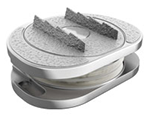Motion preservation in spine surgery is crucial to maintain spinal flexibility, reduce stress on adjacent segments, and potentially prevent long-term complications like adjacent segment degeneration, leading to faster recovery and improved functional outcomes.
- Preservation of Natural Motion:Motion-preserving techniques aim to mimic the spine’s natural structure and movement, rather than locking bones in place as in traditional fusion surgeries.
- Reduced Stress on Adjacent Segments:By maintaining motion at the treated level, the stress and biomechanical changes that can lead to adjacent segment disease (where segments above or below the fusion experience increased stress and degeneration) are potentially reduced.
- Faster Recovery and Improved Outcomes:Motion preservation techniques can lead to quicker recovery times, reduced pain, and improved overall functional outcomes compared to traditional fusion procedures.
- Minimally Invasive Approach:Many motion-preserving procedures, like cervical disc replacement, are minimally invasive, meaning smaller incisions, less blood loss, and potentially faster recovery times.
- Reduced Risk of Further Surgeries:By preserving motion and reducing stress on adjacent segments, the risk of needing future surgeries to address complications like adjacent segment degeneration is potentially lowered.
- Examples of Motion-Preserving Techniques:
- Cervical Disc Replacement:Replacing a damaged cervical disc with an artificial disc to preserve motion.
- Lumbar Disc Replacement: Replacing a damaged lumbar disc with an artificial disc to preserve motion.
- Laminoplasty: A procedure that reshapes the bone and uses hardware to keep it in place, allowing patients to retain proper range of motion in the spine
